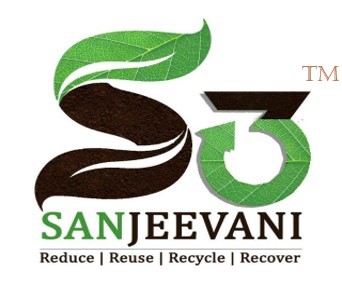Happy World Earth day!
Moving towards circular economy.

-Siddharth Singh
Solid waste management is a sector which finds itself in the limelight after the Swacch Bharat Abhiyaan gained momentum in the country. It’s rather amusing that we did not think of waste as a complication for our cities and villages until it was put right in front of our faces.
It is acceptable for an average person to not perceive the implications and the fallout of the prevailing arrangement for the waste management of our country which is being followed by the local authorities in various locations across India.
The Problem: Non-segregation of waste.
It was till now a massive debate about whether segregation can change the waste management efficiency in a city, it was only strengthened with the result of Swacch Survekshan 2018. Most of the cities ensuring segregation of waste have made it to the list of awardees. It can now be interpreted that at-source segregation is the heart of waste management solutions. The cities of Indore and Bhopal are leading by examples after bagging the 1st and 2nd prize consecutively in the recently concluded Survekshan, both the cities have recorded a rise in at source segregation significantly.
The Crisis: Dumping ground
Dumping ground is usually a low lying, marshy area in the outskirts of the city which is devoid of human population. The exponential growth in our population has compelled a chunk of people to set establishments nearby the dumping grounds. This has given rise to twin problems of people living in unhealthy conditions and protesting the closure of dumping grounds. The average life of a dumping ground is 30 years, but due to non-existent and inaccessible land, they end up being operated for nearly double the standard operating timeline. Moreover, due to the leachate that comes out of the garbage dumped in our dumping grounds the groundwater index has been highly influenced, thus creating a plethora of complications, such as food chain contamination, it also contributes to global warming, unintentionally.
Ground reality: Flawed budget utilization
Another dimension to the issue is the expenditure arrangement of budget allocated for Solid waste management in our cities. Metro cities have a massive budget allocated every year to carry out waste management related activities. The trend we observe in the metropolitan local authorities is as follows, a major chunk (55-60%) is allocated to collection of waste, (26-30%) of the budget is kept aside for transportation of waste from source to dumping ground/processing plant, and a meager (8-10%) is spent on processing of waste.
The Solution: Strengthening policy with ground action.
As a matter of fact, around 70% of the waste generated is organic in nature, which means it can be decomposed easily and converted to compost. Residents should be encouraged and provided with monetary incentives for setting up composting units in their premises. This will in turn cut down on the amount we spend on transportation of waste from source to treatment/dumping site.
Dry waste collection centers should be set up within the reach of masses who should be able to redeem coupons/cash for their recyclables which includes plastic, paper & e-waste.
Lastly, the biomedical waste should be carefully taken from source and scientifically disposed in landfills. All these efforts combined will result in a mere 5-8% of waste reaching landfills which has a potential to cut down heavily on collection and transportation cost and promote healthy and financially sound waste management set up in our cities.
The long term benefit : A Circular economy.
Metal recycling sector is the most mature recycling sector in the country by this time, it employs nearly 1.75 million people and contributes nearly 2% to the GDP of the country. A Strong recycling lobby for plastic, paper & e-waste has a tendency to generate jobs for more than 5 times the number of people currently employed in the recycling sector, this is in addition to savings of over 14 lakh crores through resource recovery by the year 2030, which works to around 11% of our annual GDP.